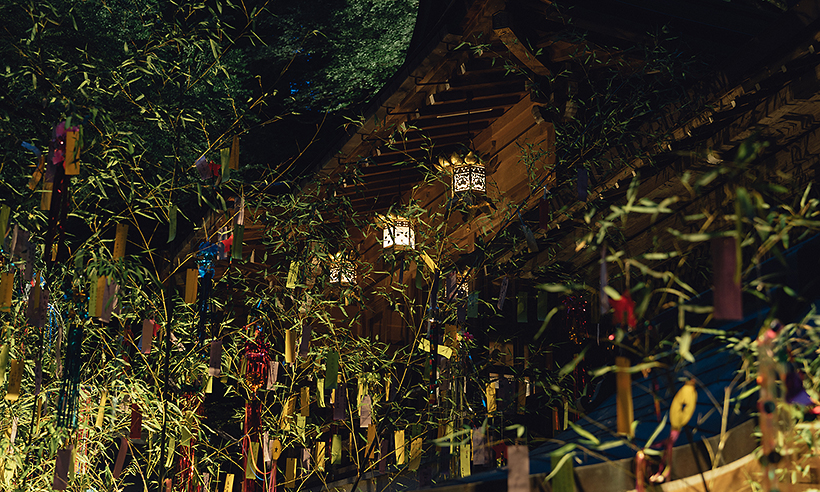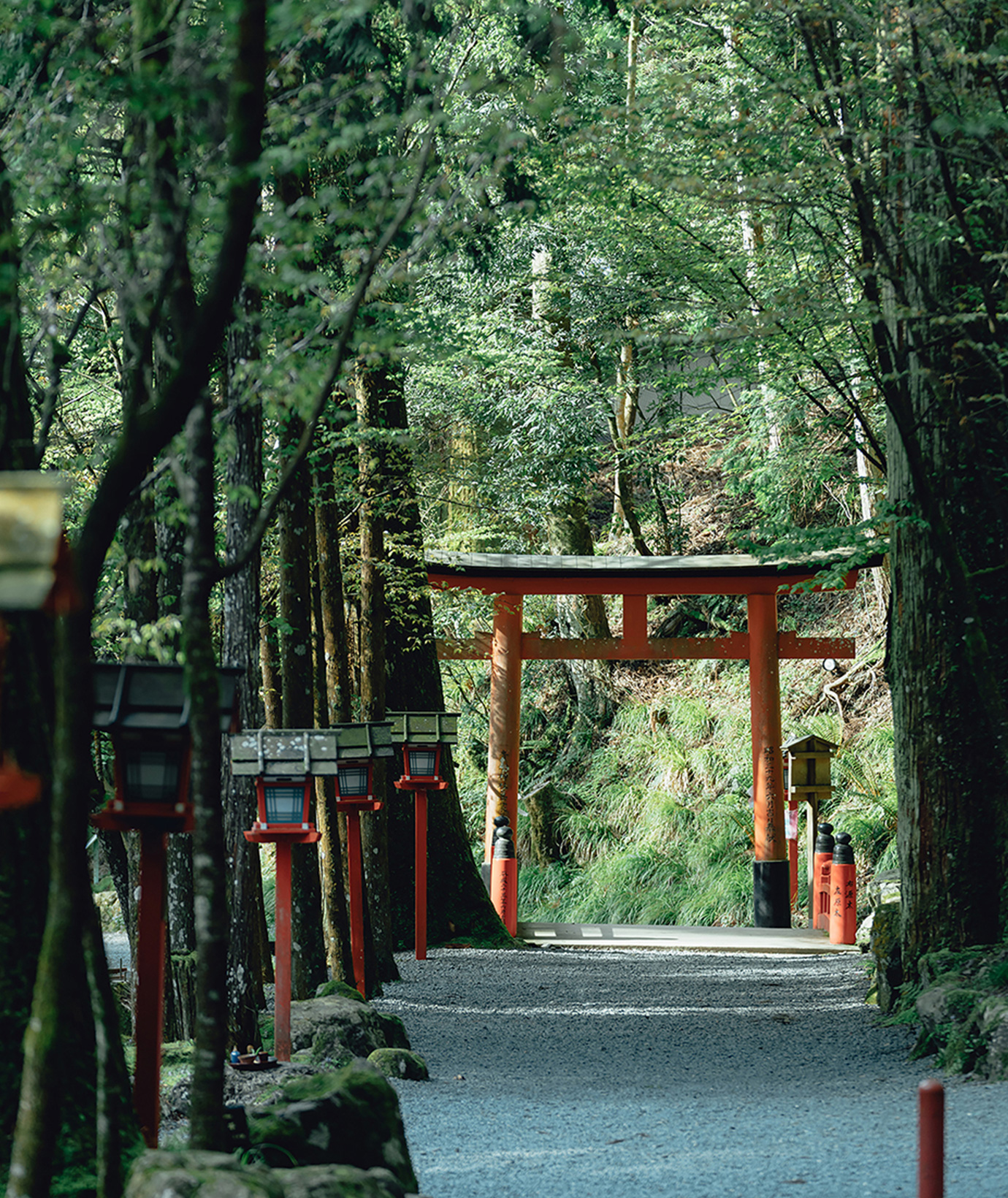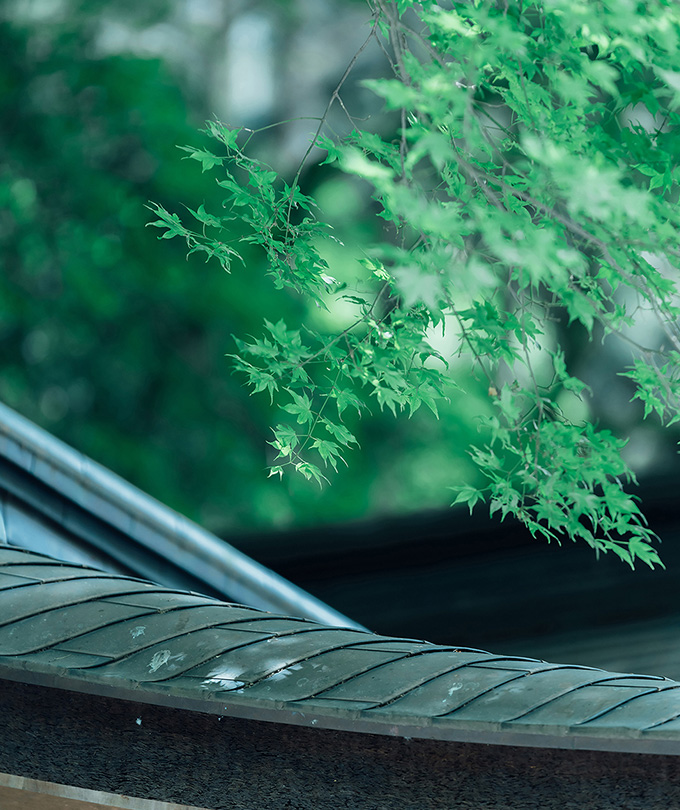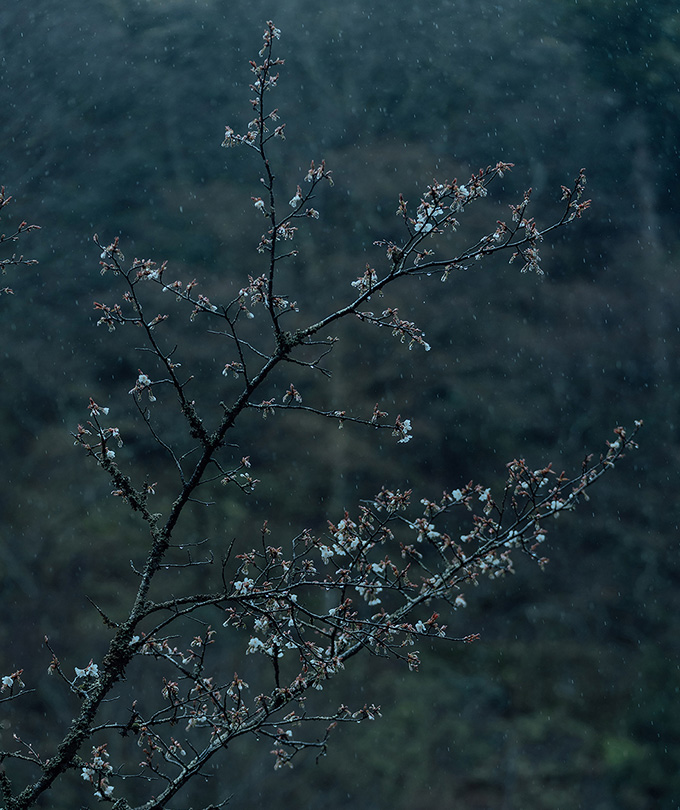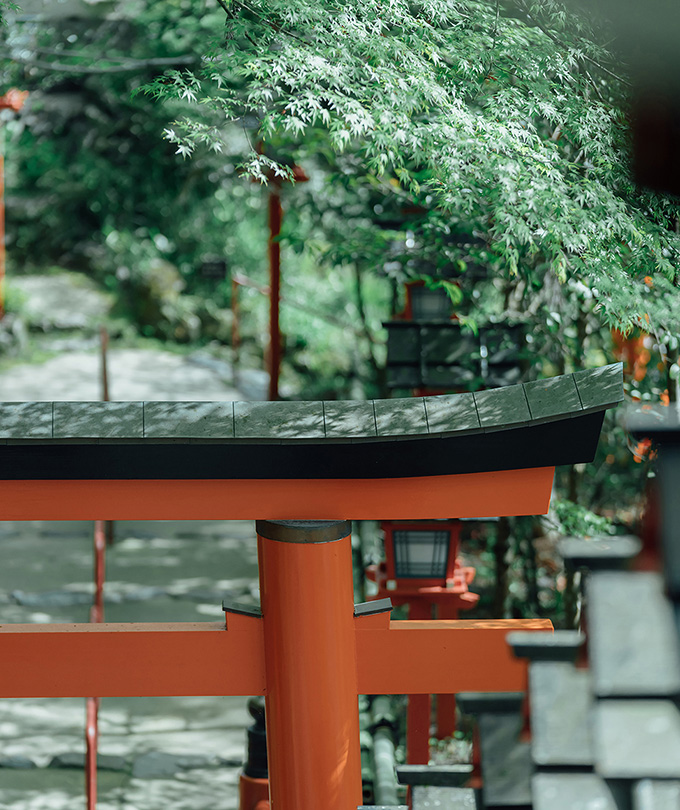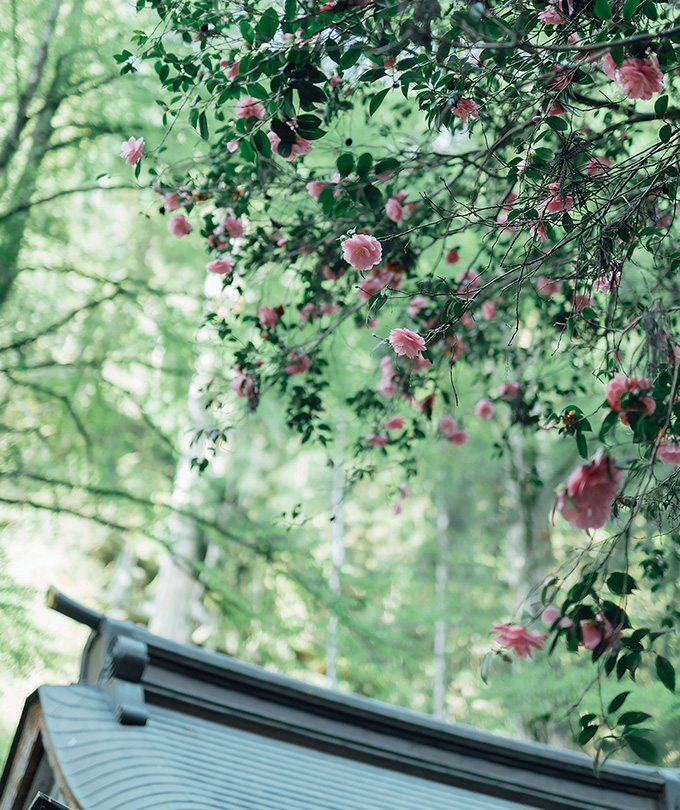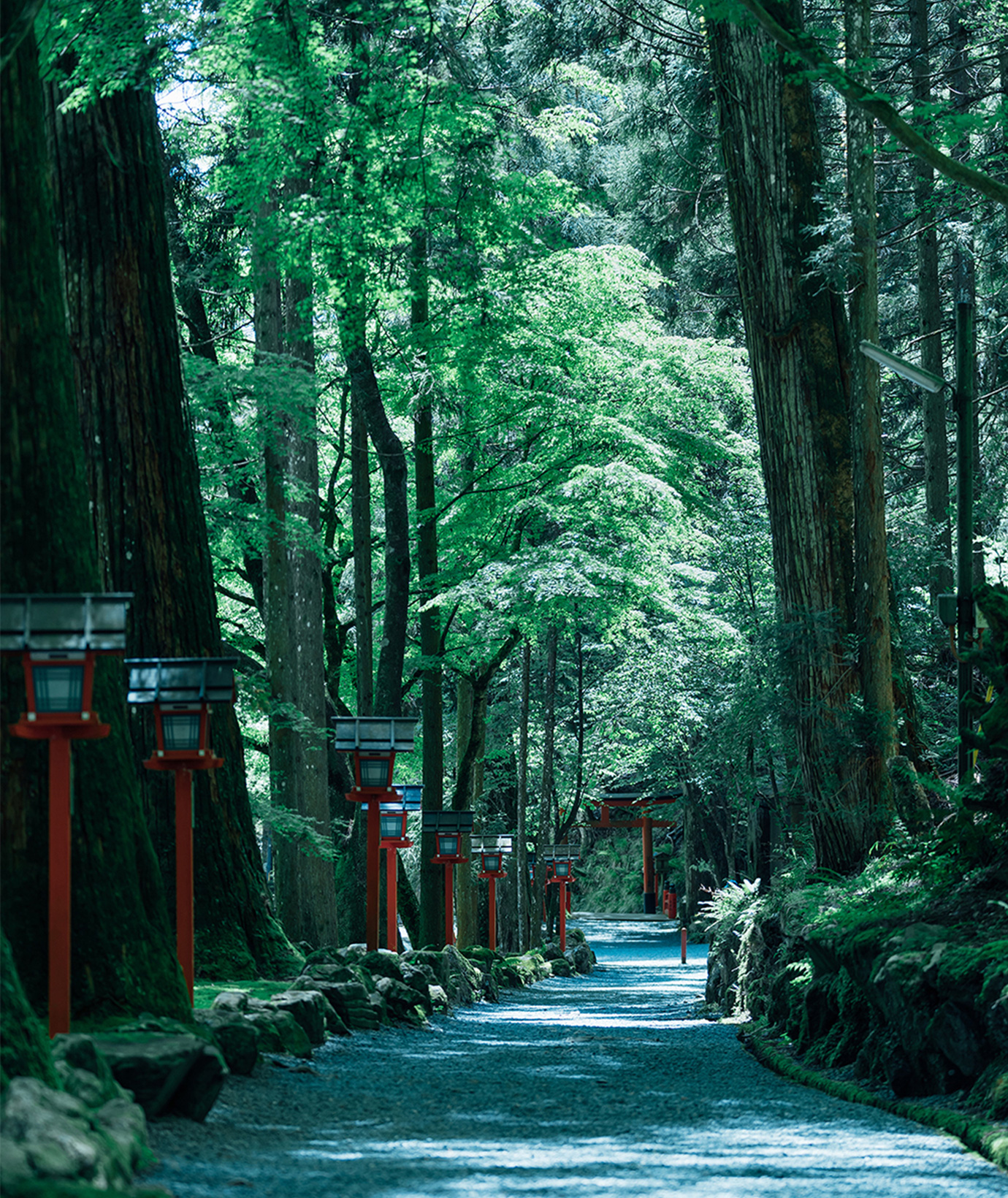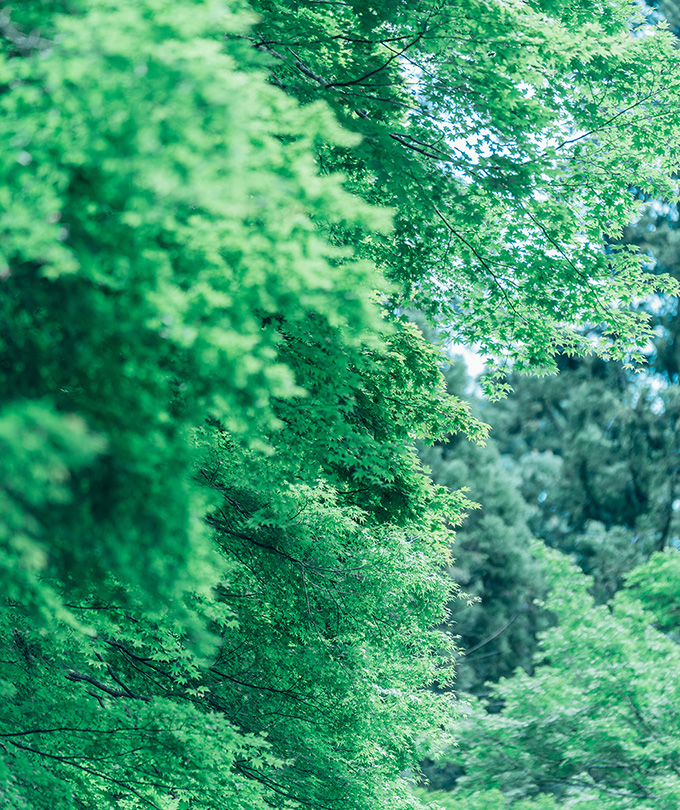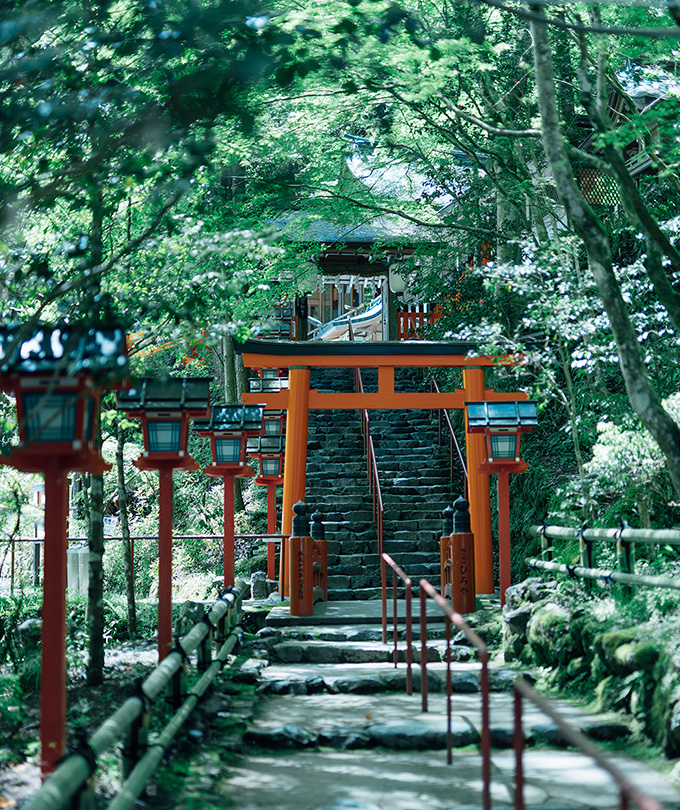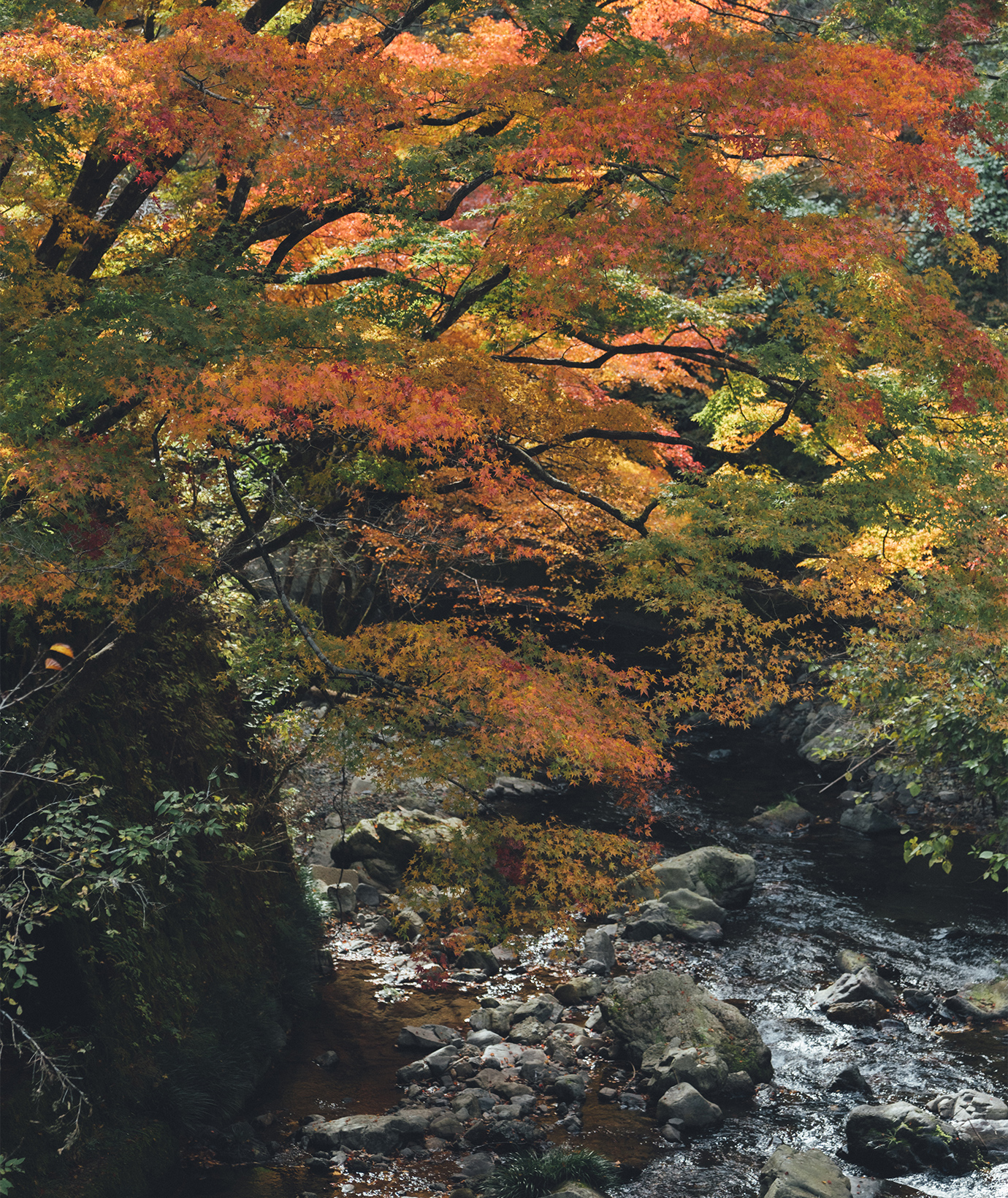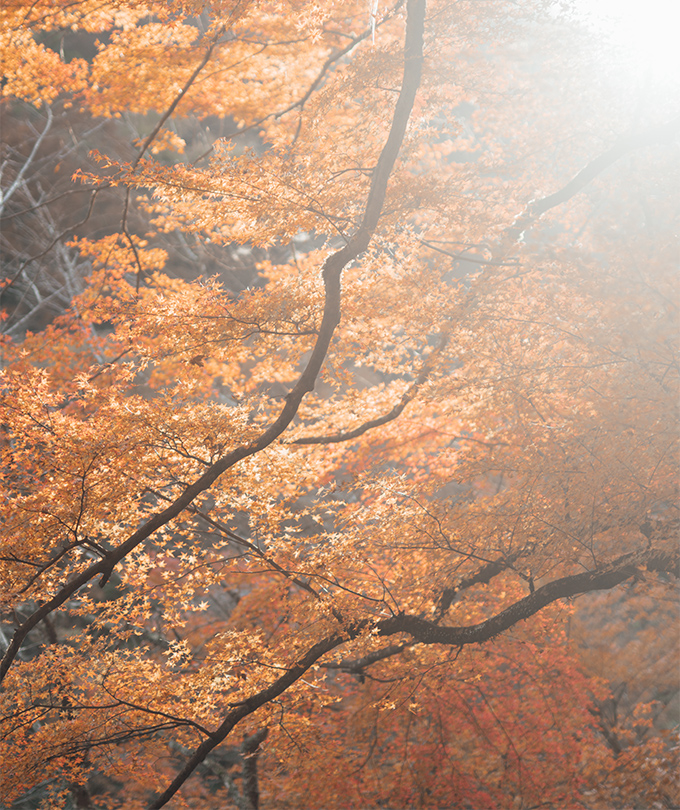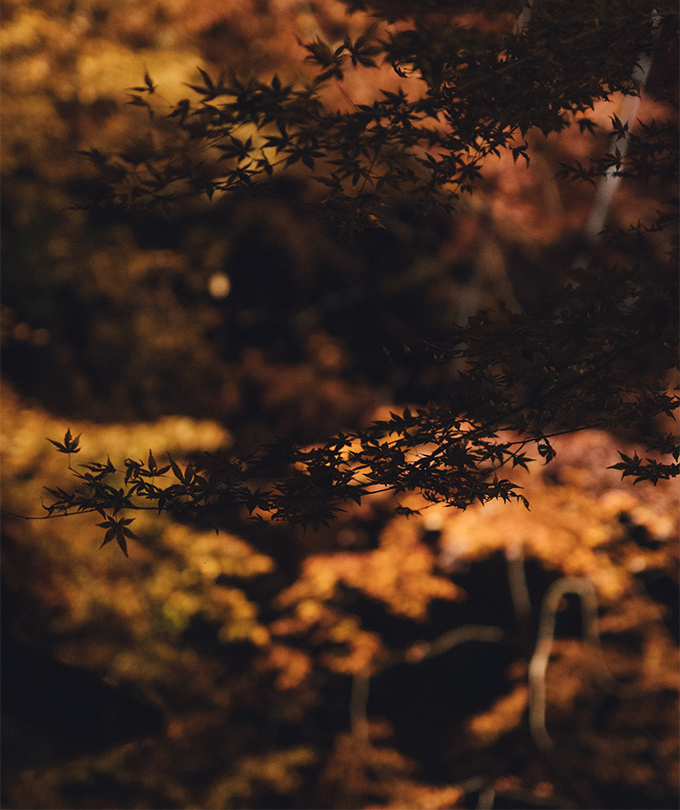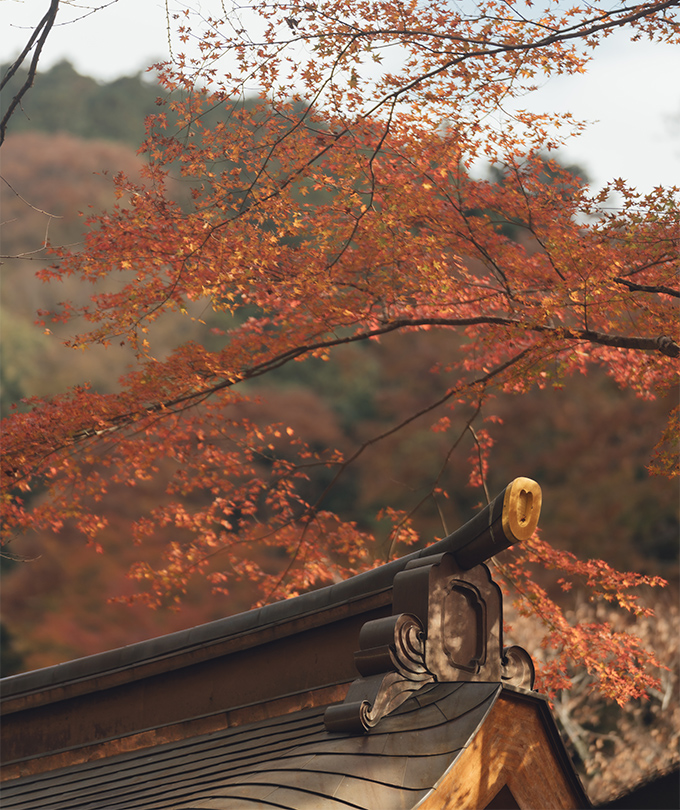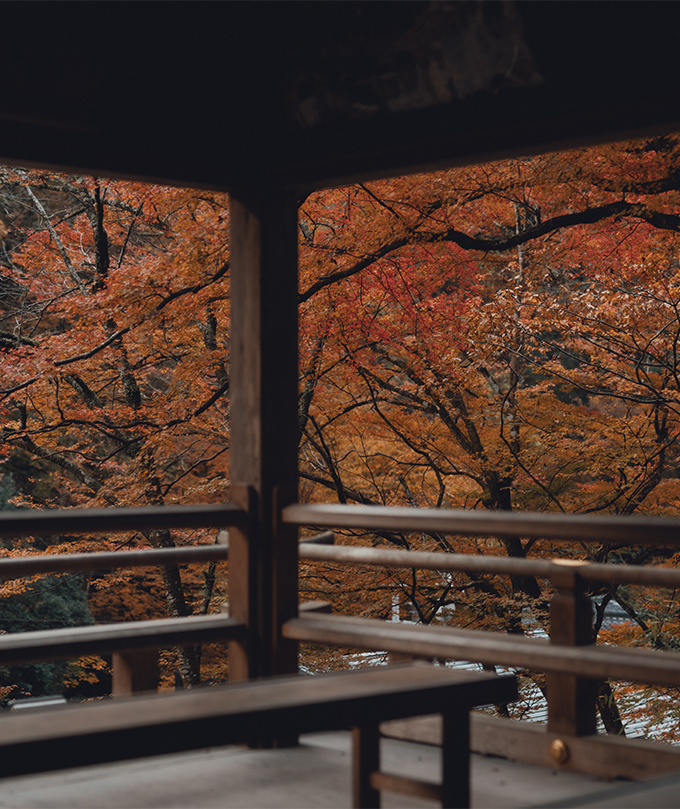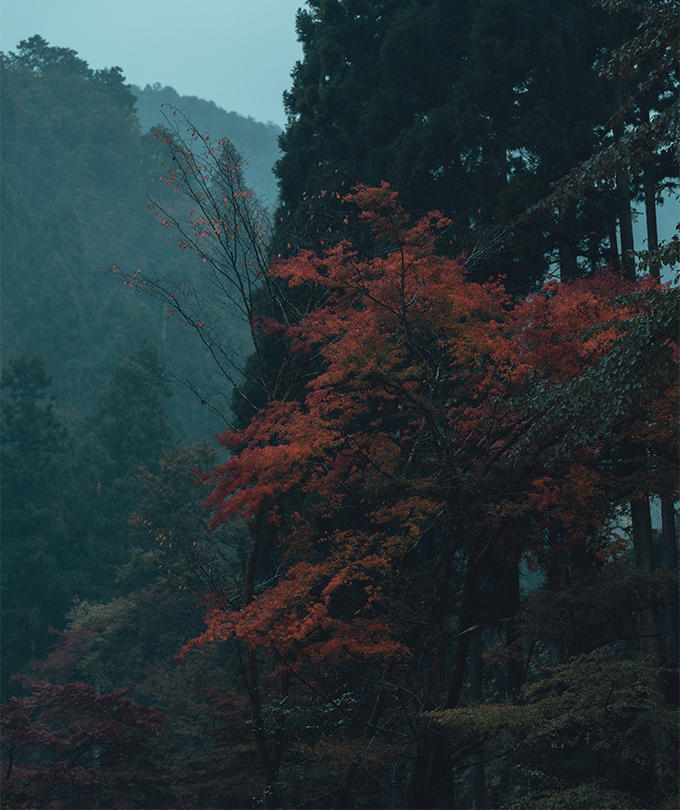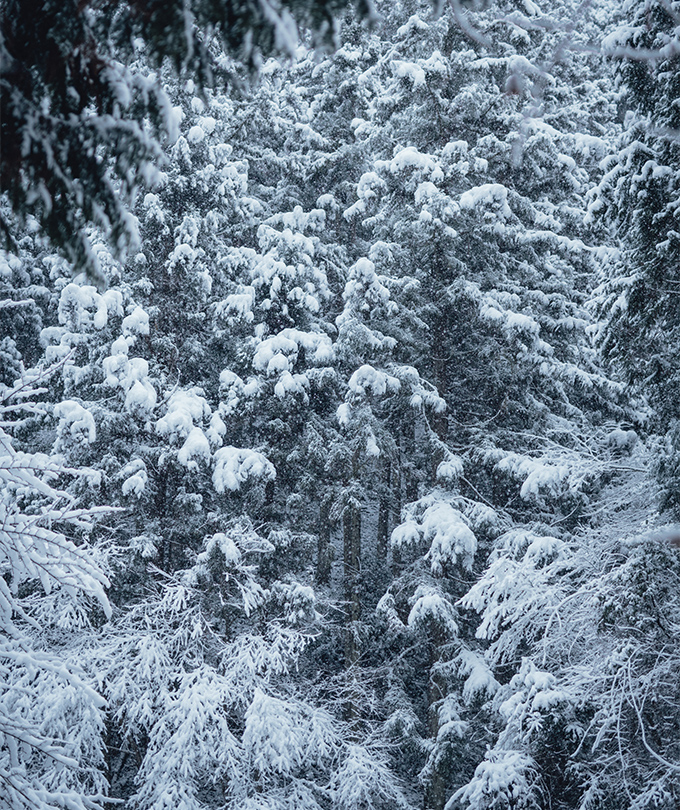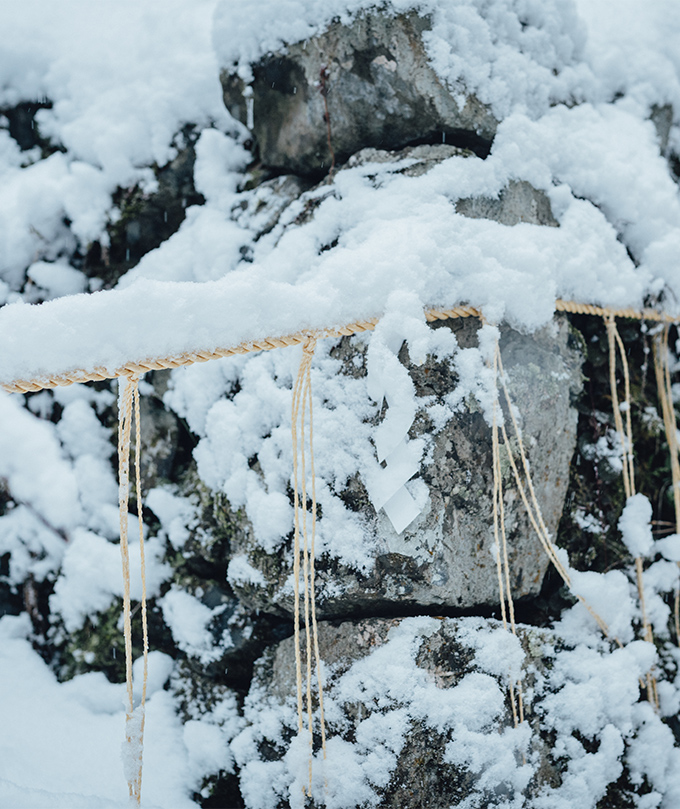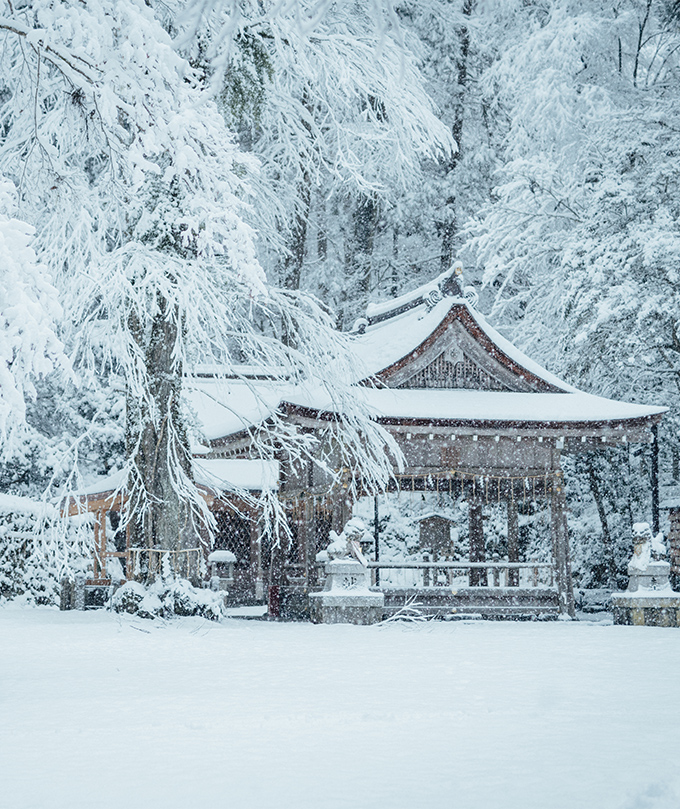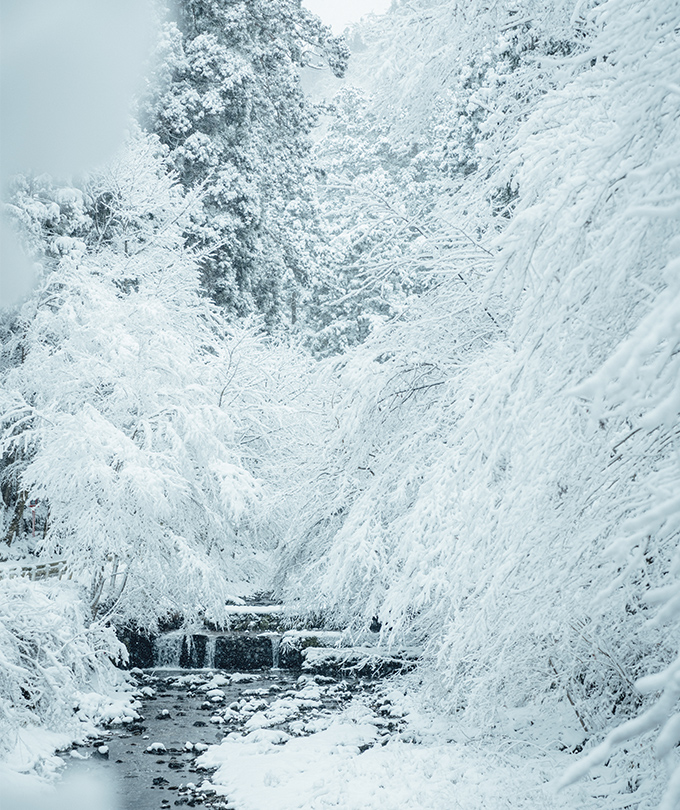Because the rear shrine where the shrine was founded was swept away in flooding, the main shrine was moved to its current location in 1055. Since then, the shrine had by 1633 been reconstructed over 36 times and was overhauled using national funds in 1922. The current main shrine was in the reconstruction conducted during the Heisei period (1989-2019) newly rebuilt from the ground up. The sacred water that springs forth from the stone wall in front of the shrine is Mt. Kibune spring water and is famous for its “hydromancy” where writing will appear on fortune slips when they float in the sacred fountain.
The kasuga-dourou stone lanterns along the Main Shrine front path are lit everyday from sunset to closing.
*Since the shrine has many stone stairs, the shrine cannot be visited by people with wheelchairs and strollers.


